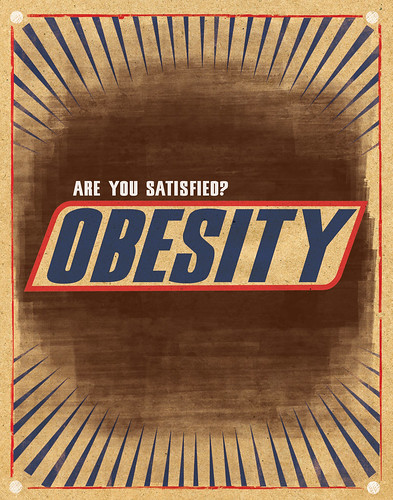 It is a very persistent logical fallacy. You’ve heard it many times in the recent past: if we continue to give tax breaks to big business, then they will continue to be able to create new jobs. Or perhaps, you’ve heard it phrased differently: if we eliminate those tax breaks, oh my, then businesses won’t create new jobs.
It is a very persistent logical fallacy. You’ve heard it many times in the recent past: if we continue to give tax breaks to big business, then they will continue to be able to create new jobs. Or perhaps, you’ve heard it phrased differently: if we eliminate those tax breaks, oh my, then businesses won’t create new jobs.
Let’s start with a reality check. Big businesses have loopholes that bring their effective tax rate down to lower levels than most working Americans. Warren Buffett has noted that his effective tax rate – after corporate loopholes – is lower than his secretary’s tax rate. Go figure.
President Obama has presented the nation with a proposed Buffett Tax that would make a first attempt at balancing this out. Now, of course, we’re hearing the claims of “how are we supposed to create jobs now?”.
Note to America – you might want to look at those job creation numbers in the time that the loopholes have been in effect.

Frankly, I applaud Dr. Irrgang in presenting the NY Times with the current clinical reality of physical therapy. But there was a significant backlash by many physical therapists, including Irrgang’s peers in the American Physical Therapy Association, for his use of the word “voodoo”.
My biggest concern is that if there was a problem with the use of the term, then there is an even bigger issue with the middle-of-the-road response from my peers and my professional association.
 It is a strange health irony that we face.
It is a strange health irony that we face.
The costs of obesity are staggering. In order to decrease both the short-term and long-term costs, we need to get people moving. But as we get more people moving, how many get injured along the way?
In a health care system that has tremendous levels of over-utilization, are we truly saving any money if people end up injured in the process?
I am not saying that we need to live in fear of injury and stay obese. What I am saying is that simply “getting active” can be a significant risk factor – and if you do get injured, the health care “system” will probably over-treat you. If we can prevent injuries while losing weight, we end up with huge cost savings. If we have an increase in injuries while attempting to lose weight, the long-term costs may actually rise.
Let’s take a look at how the process typically works. If you are overweight, which represents a significant percentage of the US population, you might decide that you need to lose some weight. You might decide that you need to change your lifestyle. You might even decide to understand the reasons why you eat and address them accordingly. Great stuff!
The hard part is over … or is it?
 With all the insanity that is prevailing in the world of college sports these days, it is time to forge ahead and expand the Big 12 Conference. Wait, did I say that correctly? The Big 12? Isn’t it dead yet?
With all the insanity that is prevailing in the world of college sports these days, it is time to forge ahead and expand the Big 12 Conference. Wait, did I say that correctly? The Big 12? Isn’t it dead yet?
Far from dead, I suspect, now that the PAC-12 has decided that they don’t want to consider adding anyone else just yet. And since Texas A&M appears to have instigated the latest episode of this mess, let’s just get on with expanding the Big 12 with or without them.
There seems to be a trend of university presidents constantly seeing greener cash, errr, grass on the other side of the conference fence. Of course, cash has a way of doing that to university presidents, much like the BCS. Little thought is put into the long-term ramifications and growth of college sports. But in the case of the Big 12, instead of the ranks diminishing, they should in fact be aggressively expanding. For some reason, schools are jumping ship left and right, yet the Big 12 Conference has all the makings of being one of the premier conferences in the country, and perhaps the FIRST super conference with some intelligent regional involvement.
Here are five reasons why the time is ripe for the Big 12 to expand:
 Every athlete wants to improve. That is a simple fact. Most athletes will opt for the “more is better” approach. But if you move poorly in space and have lousy mechanics, then “more” just reinforces the bad.
Every athlete wants to improve. That is a simple fact. Most athletes will opt for the “more is better” approach. But if you move poorly in space and have lousy mechanics, then “more” just reinforces the bad.
As a coach, I will always opt for the “more better is better” approach. Good quality training involves working on technique. My goal is to make each and every athlete move better in space - which always involves working on the technical aspects of their sport training.
All motor programs for sport activities are under volitional control. Motor programs can thus be improved with training! But to do so, we have to keep in mind that the primary limiter when learning a new sport activity (or component of it) is neuromuscular fatigue. For example, when doing swim drills, there is a point of diminishing returns in which “doing more” will only reinforce bad movement patterns. From a neurological (central nervous system) perspective, the goal must always be one of quality, maintaining the goal movement pattern, and then stopping when neuromuscular fatigue sets in.
Oftentimes a key word or mental cue can be a starting point to improving an athlete’s sport biomechanics. Here are a list of 17 mental cues that can be used to improve your sport technique for each of the three triathlon disciplines.
 The 2011 Austin City Limits Music Festival was the 10th anniversary of this three day musical extravaganza. It has been quite a decade of live music on the great lawn of Zilker Park. Once again, it provided me with a strong reminder of the beauty of live music and the powerful messages it can deliver.
The 2011 Austin City Limits Music Festival was the 10th anniversary of this three day musical extravaganza. It has been quite a decade of live music on the great lawn of Zilker Park. Once again, it provided me with a strong reminder of the beauty of live music and the powerful messages it can deliver.
Music has a way of pulling people together – or at least putting them back on the same page if only for a moment or two. The complex interplay of notes - and spaces between the notes - breathes life into the old, and passion into the young. I guess I still have a mixture of both. When played by those having that special musical genius, you are witness to something that is simply beyond understanding and comprehension.
Such is the power of music. And such are the delights of ACL.
The 10th anniversary of the Austin City Limits Music Festival had many delights. With that in mind, here is my own brief personal diary of this year’s festival.
 Back in January 2010, the NY Times published an article entitled “Treat Me, But No Tricks Please”. It got a lot of physical therapists fired up, and it even prompted a response from the American Physical Therapy Association. And it made me chuckle about many things I have known for a very long time.
Back in January 2010, the NY Times published an article entitled “Treat Me, But No Tricks Please”. It got a lot of physical therapists fired up, and it even prompted a response from the American Physical Therapy Association. And it made me chuckle about many things I have known for a very long time.
The firestorm of debate started when Dr. James J. Irrgang, a researcher in the Department of Orthopedic Surgery at the University of Pittsburgh and President of the Orthopedic section of the American Physical Therapy Association at the time, noted that “there is a growing body of evidence that supports what physical therapists do, but there is a lot of voodoo out there, too”. He also noted that “You can waste a lot of time and money on things that aren’t very helpful”.
Fast forward to 2011. I am now in the midst of preparing a 3 hour presentation entitled “Mechanisms Of Therapeutic Exercise Progression” for the Texas Physical Therapy Association’s Annual Conference in October. This will be my third consecutive appearance at their Annual Conference. What I have been reminded of – as I have reviewed a topic high on evidence-based cellular physiology research and low on practical application by clinicians – is that Irrgang was indeed correct. Sadly, not much has changed in our profession since this article was published, even with the responses and outrage it generated.
 "Running Injuries: Etiology And Recovery- Based Treatment" (co-author Bridget Clark, PT) appears in the third edition and fourth editions of "Clinical Orthopaedic Rehabilitation: A Team Approach" by Charles Giangarra, MD and Robert C. Manske, PT.
"Running Injuries: Etiology And Recovery- Based Treatment" (co-author Bridget Clark, PT) appears in the third edition and fourth editions of "Clinical Orthopaedic Rehabilitation: A Team Approach" by Charles Giangarra, MD and Robert C. Manske, PT.
 Allan Besselink, PT, DPT, Ph.D., Dip.MDT has a unique voice in the world of sports, education, and health care. Read more about Allan here.
Allan Besselink, PT, DPT, Ph.D., Dip.MDT has a unique voice in the world of sports, education, and health care. Read more about Allan here.
 Top 5 finalist in three categories: "Best Overall Blog", "Best PT Blog" and "Best Advocacy Blog".
Top 5 finalist in three categories: "Best Overall Blog", "Best PT Blog" and "Best Advocacy Blog".